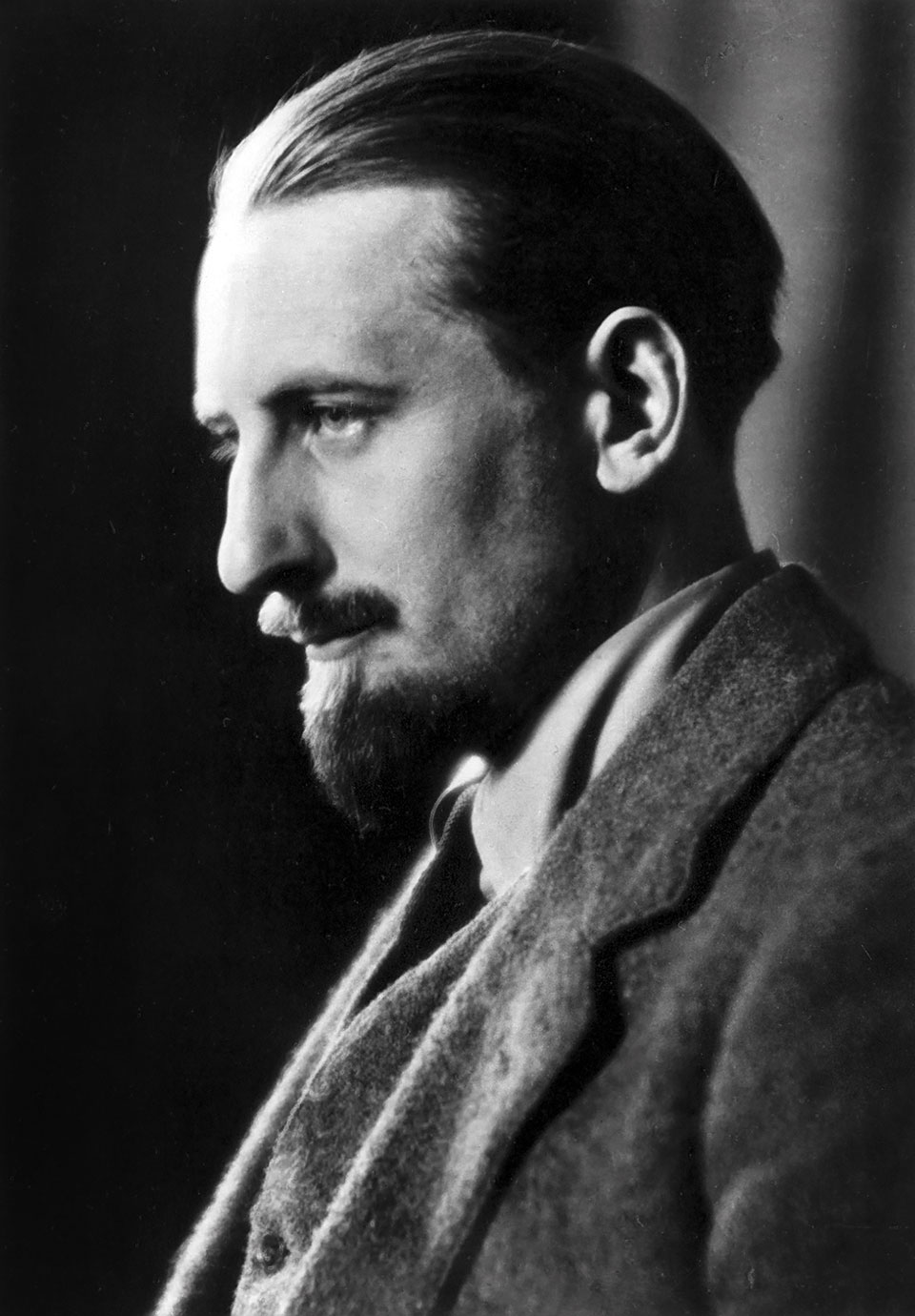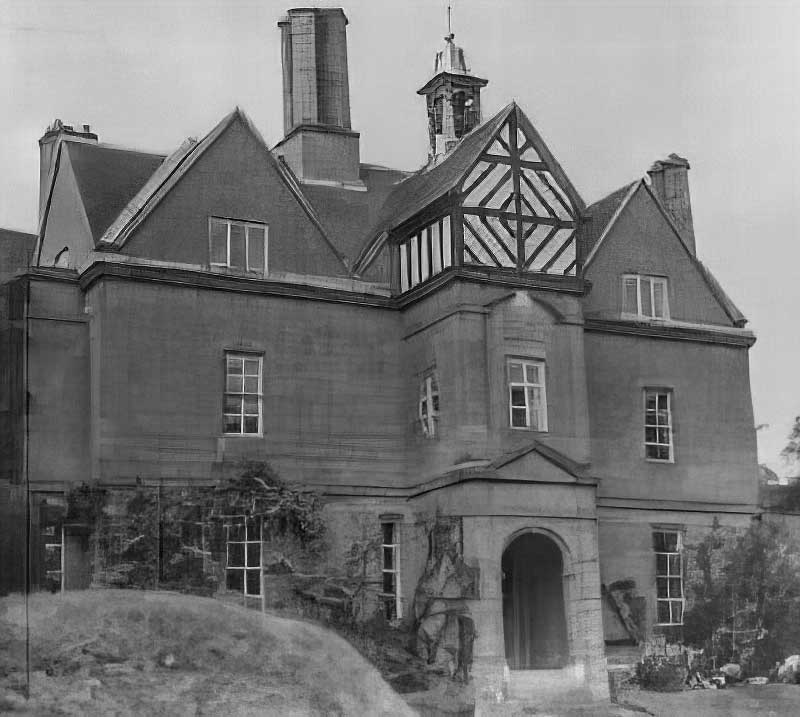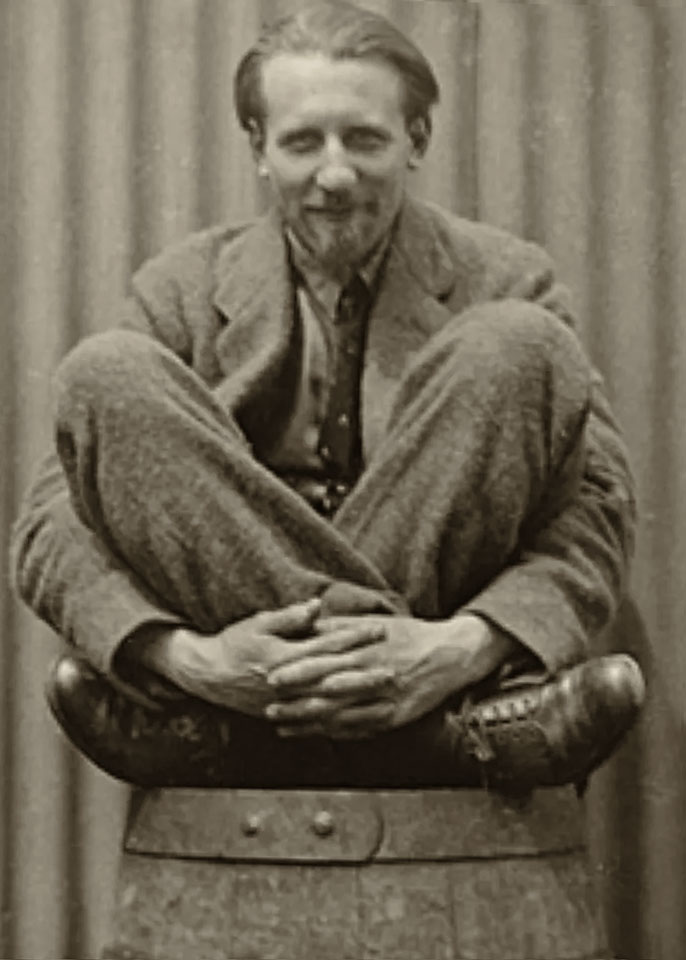THE PETER WARLOCK BIOGRAPHY
All music was modern once
All music was modern once
…much more of the music of yesterday already sounds more old-fashioned than works which were written three centuries ago.
…much more of the music of yesterday already sounds more old-fashioned than works which were written three centuries ago.
Peter Warlock – a biography
1894 – 1903: Birth, London, Wales
Born in the Savoy Hotel, London, on the 30th of October 1894, Philip Arnold Heseltine came from a well-to-do family of stockbrokers, solicitors, and art connoisseurs, his father dying when he was only two. His domineering mother, Edith Covernton, had Welsh connections and Warlock was to have strong ties with Wales throughout his life. In 1903 she married Walter Buckley Jones and mother and son moved to moved to Jones’s estate, Cefn Bryntalch, in Wales.
1903 – 1911: School, Delius, Eton
Joining Stone House Preparatory School in 1903, his interest in music was awakened through the pianola; his education continued at Eton in 1908 where his musical interests were encouraged by a sympathetic piano teacher, Colin Taylor. It was Taylor who in 1911 obtained permission for him to attend a concert of Delius‘s music, an event which was to have a lasting effect on his life. Warlock’s interest in Delius’s music had begun as early as 1909 and, by the time of his first meeting with Delius at that concert in 1911, he had already become obsessed with his music. From then on a quite remarkable friendship developed between the two men and for the next seven years Delius was Warlock’s mentor as well as a regular correspondent for the rest of his life.
1911 – 1915: Cologne, University, Daily Mail, Cornwall
Although it had been presumed that Warlock would follow in the family footsteps and work in either the Stock Exchange or Civil Service, there was a certain indecision about his immediate future and, on finishing school, he spent a few months in Cologne, studying German and the piano. These musical studies, however, proved unsuccessful and, resigned to a non-musical career, he entered Oxford in October 1913 to read for a degree in classics. Dissatisfied and unhappy, he left after only one year and for a short while enrolled as a student at the University of London, but this second attempt at a University career was even shorter lived than his first.
In February 1915 he secured an appointment as music critic on the staff of the Daily Mail though he soon found the work frustrating and lasted in the position for barely four months. One of his early interests was Elizabethan literature and now, finding himself unemployed, he spent time in the British Museum editing early music.
It was during this period that he met D. H. Lawrence whose work he admired, soon finding himself part of the author’s circle and planning a Utopian settlement in America. At the beginning of 1916 Warlock, a conscientious objector, followed Lawrence to Cornwall and involved himself in an unsuccessful venture to publish Lawrence’s books. The friendship between the two men, however, proved highly volatile and they soon parted company under acrimonious circumstances.
“Grandiose schemes by which to bring about the ‘regeneration’ of music in England.”
“Grandiose schemes by which to bring about the ‘regeneration’ of music in England.”
1916 – 1917: London, Cecil Gray, Van Dieren, Cornwall, Marriage
Soon after Warlock’s return to London he met the composer and critic, Cecil Gray, and the two soon became close friends, sharing a bohemian existence in Battersea. Together they planned a number of grandiose schemes by which to bring about the ‘regeneration’ of music in England. Warlock’s meeting in June 1916 with the enigmatic, Anglo-Dutch composer Bernard van Dieren also had a profound effect on him and he now became an enthusiastic champion of his music. In November 1916 he published his first musical article and used, for the first time, the pseudonym, Peter Warlock.
Having in the meantime married an artists’ model, Minnie Lucy Channing (‘Puma’), who had earlier borne him a son, Warlock returned to Cornwall for a brief while in April 1917 and, outwardly, at least, resumed cordial, if distant, relations with Lawrence. What he did not know was that Lawrence was at the time writing Women in Love in which he and Puma were being introduced as two unattractive characters. When in 1921 he learnt that the book was to be published, he threatened legal action and Lawrence was forced to rewrite certain passages.
1917 – 1919: Dublin, London, Peter Warlock
Although he had intended settling in Cornwall for a time, Warlock became alarmed at the renewed possibility of military conscription and in August 1917 fled to Dublin where he remained for the next year. During this period he became involved in certain occult practices which Gray claimed were psychologically damaging. This ‘Irish’ year was, nevertheless, a very positive and productive one, marked by a sudden surge of remarkable artistic productivity when, in the space of a fortnight, he wrote ten songs, some of which rank amongst his finest compositions. In August 1918 he returned to England and sent seven of these recently composed songs to the publisher Winthrop Rogers, using the pseudonym Peter Warlock, for he realized that the name Heseltine was already being regarded with suspicion and hostility by the London musical fraternity. Given also its occult associations, the choice of name is significant. It was from this time on that he became more and more involved in a number of public and private quarrels which were to occur throughout his life.
“Warlock decided to settle in Eynsford and it is from this period that much of the Warlock ‘legend’ originates”
“Warlock decided to settle in Eynsford and it is from this period that much of the Warlock ‘legend’ originates”
1920 – 1924: Sackbut, Wales, The Curlew
In 1920 Rogers decided to reorganize a magazine which he owned, The Organist and Choirmaster, into something of more general interest. Accordingly The Sackbut was launched with Warlock as editor. Between May 1920 and March 1921 nine issues appeared and included a varied amount of material much of which was of a controversial nature. However, just as The Sackbut was beginning to succeed, Rogers, nervous of the contentious material, withdrew his financial backing, Curwen took over the publication, and an embittered Warlock was relieved of the editorship.
After this debacle an impecunious Warlock moved back to the family home in Wales where he lived almost continuously for the next three years. Here he completed a book on Delius, made a number of arrangements of Delius’s works, transcribed an enormous quantity of early music and also composed a large number of original songs, completing in June 1922 his acknowledged masterpiece, the song-cycle, The Curlew.
1925 – 1929: Eynsford, Writings, Capriol, ILO
At the beginning of 1925 Warlock decided to settle in Eynsford where he ran a kind of open house and it is from this period that much of the Warlock ‘legend’ originates. During these years he wrote a study of Gesualdo, a book entitled The English Ayre, continued with his early music transcriptions, and also produced a slowly decreasing number of original compositions, including some fine songs and perhaps his best known piece, the Capriol Suite. By autumn 1928, however, he had found it financially impossible to maintain the Eynsford life-style and moved back to Wales briefly before returning to London. Having felt a slow drying up of his creative abilities, he was more than grateful when Thomas Beecham invited him to edit the Imperial League of Opera (ILO) magazine as part of a new operatic venture and to help in the organization of the Delius Festival held in October 1929. The festival itself was a great success but by the beginning of 1930 Beecham’s venture had collapsed and Warlock was once again out of work.
1930: Depression, Death
Life became bleaker as the year 1930 progressed and there seemed to be little demand for his songs, if indeed the inspiration or will to compose was still there. Black moods of depression settled more frequently and he was found dead, of gas-poisoning, in his flat in Chelsea on the morning of 17 December 1930. At the inquest the coroner recorded an open verdict as there was insufficient evidence on which to decide whether death was the result of suicide or accident.
“He made an enormous contribution to the rediscovery of early English music”
“He made an enormous contribution to the rediscovery of early English music”
Warlock’s legacy
Warlock is essentially a miniaturist and the largest part of his output consists of solo songs with piano accompaniment. There are in addition choral works (some unaccompanied, some with keyboard accompaniment and a few with orchestra), the remaining handful of works being for orchestra or for piano. He was also a distinguished editor and transcriber of early music (570 published items) as well as an author (9 books, 73 articles), editor and critic (51 reviews). At a time when musical scholarship was still very much in its infancy, he made an enormous contribution to the rediscovery of early English music. Here he showed a rare respect for the composers’ intentions, his strict editorial practice being to present only that which the composers had written without emendations or additions.
The initial influence of the Victorian and Edwardian drawing-room songs (notably those of Roger Quilter), can be seen in his early settings (such as ‘There is a lady sweet and kind’). Although elements of Delius’s style were absorbed into his harmonic palette at an early stage, his encounter with the music of van Dieren had a marked effect on his developing style and his somewhat austere ‘Saudades’ carefully imitate the van Dieren model. As a result his style became more disciplined, less harmonic and more contrapuntal in texture. Acquaintance with the music of the Elizabethans added yet a new influence as in ‘As ever I saw’ and ‘Sweet content’, with a strong vein of medievalism and mysticism present in songs such as ‘My gostly fader’ and ‘The bailey berith the bell away’. Folk-song elements also emerge (‘Yarmouth Fair’ and ‘Milkmaids’) and the roistering Warlock of the pubs and taverns surfaces in songs such as ‘Captain Stratton’s Fancy’ and ‘Good Ale’. The influence of Bartók, another of Warlock’s enthusiasms, even manifests itself, particularly in The Curlew.
The idiosyncratic harmonic language with its unlikely and disparate mixture of Edwardiana, Delius, van Dieren, Elizabethan, and folk-music gives Warlock’s music a strongly personal voice. Among his choral pieces are some exceptionally beautiful carol-settings, notably ‘Bethlehem Down’ and ‘Balulalow’. The marked contrast between the extrovert and gentler settings seemed for some to confirm an apparent dichotomy in the Warlock/Heseltine personality and the pseudo-psychological interpretation of his complex character as schizophrenic was exploited by Cecil Gray in his memoir. However, acquaintance with Warlock’s complicated life story, with its constant family pressures, his lack of self-confidence, wild emotional swings, and lack of any permanent employment or regular income, confounds such simplistic explanation. The split-personality theory was, at any rate, vehemently denied by his closest friends. His final frustrations lay, no doubt, in his lack of formal musical training and the miniature forms in which his genius moulded itself led him into a kind of artistic cul-de-sac. In the end he had no way of breaking through the barriers of his self-created musical language either to develop new harmonic techniques or explore new territories of form.
Want to find out more about Warlock’s music? You may wish to read our introduction to Warlock’s Music, or go straight to the in-depth article.
Copyright © Barry Smith 1997, 1998






